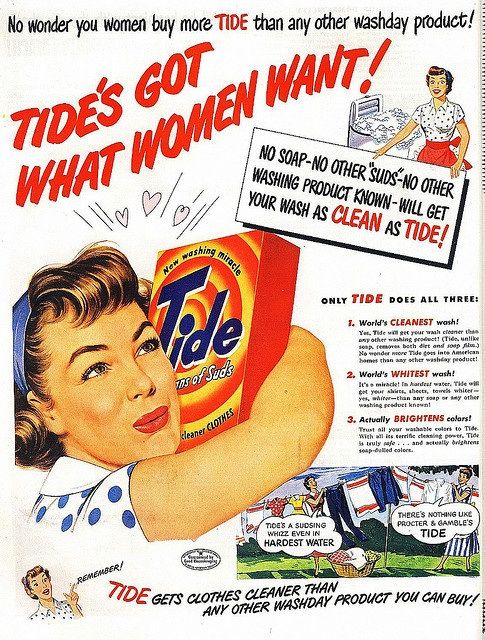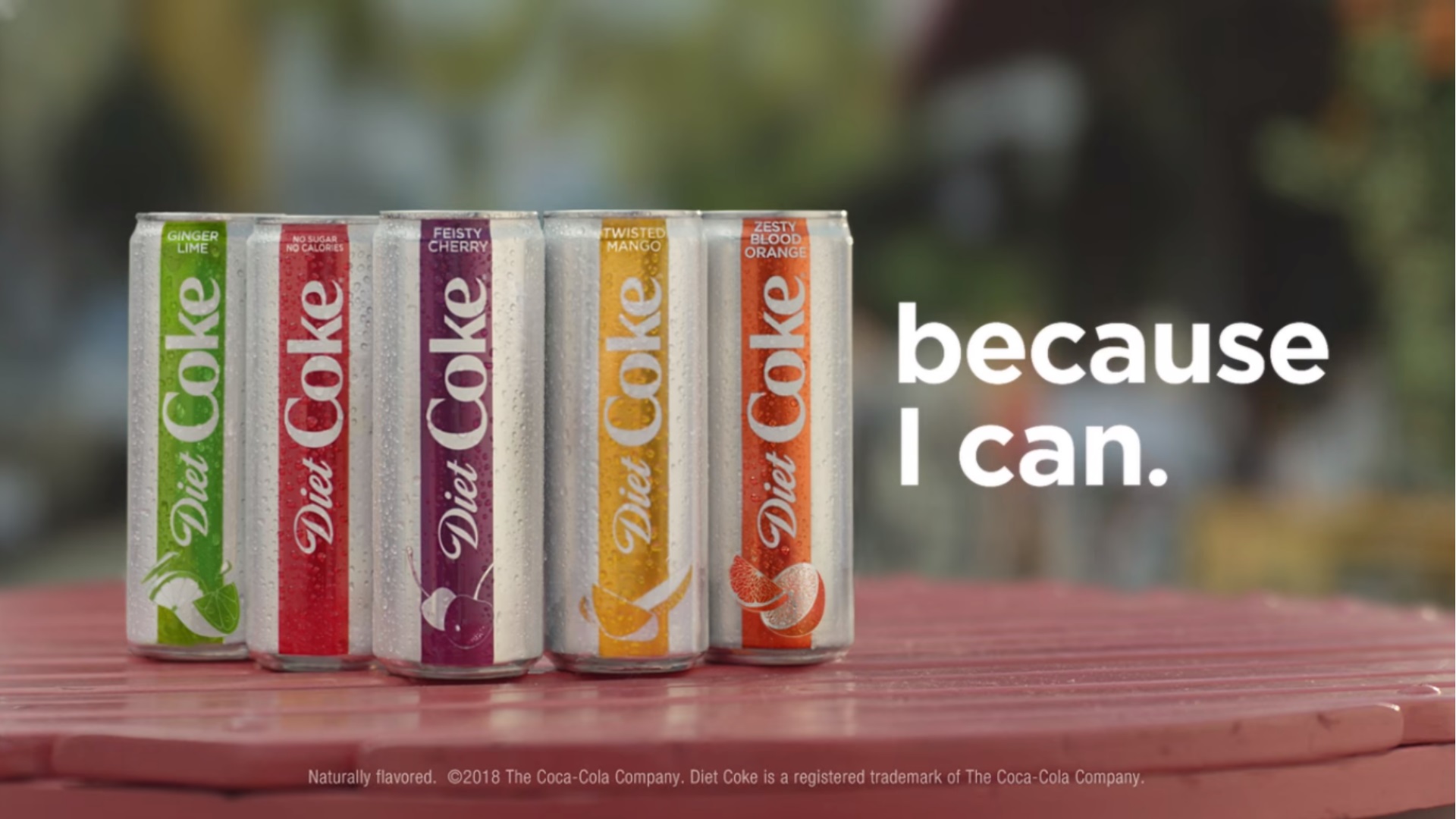
1) What year was the advert produced?
The advert was produced in 1950s.
2) How were women represented in most adverts in the 1950s?
Women were represented as housewives and were meant to love cooking and cleaning and being responsible for their families. They are also represented as inferior towards men and men are more able and more stronger than women.
3) How does the heading message ('OMO makes whites bright') and typography promote the product?
The heading is bold and stands out. It's written in a sharp bubble giving the effect of a news flash. "OMO makes white bright!" is short and also memorable.
The stereotype this advertisement has is the women doing the laundry. She's also wearing makeup even though she's at home. No men are presented in this advertisement showing it's the women job to do the laundry. She's also smiling while doing it, demonstrating women should be happy while doing chores.
5) Why is a picture of the product added to the bottom right of the advert?
6) What are the connotations of the chosen colours in this advert?
The women is joyful cleaning and her facial expressions shows she's delighted how bright her washing is. A representation of women in this advert is she's wearing a bold red lipstick showing she wants to look perfect even when cleaning. Her sleeves are rolled up showing she's hard working and her clothes and the colour scheme link as they are both red, blue, white and green
7) How does the anchorage text use persuasive language to encourage the audience to buy the product? Give examples.
The anchorage text is used to persuade the audience to buy the product because it mentions how bright the clothes are and the effect of them. It includes a lot of repetition of "OMO makes white bright" to reinforce how high the quality of the product is.
8) What representation of women can be found in this OMO advert? Make specific reference to the advert and discuss stereotypes.
The representation of women that can be found is that they are house workers and should be happy this is because of the lipstick she is wearing and the pout she is giving to the screen.
9) What is the preferred reading for this advert - what did the producers of the advert want the audience to think in 1955?
The producers of this advert wanted the buyers to think that if you are a women you should be happy to clean the house and we expect you to be happy with your house chores.
10) What is the oppositional reading for this advert - how might a modern audience respond to this text and the representation of women here?
A modern audience would disagree with this advertisement because a women is doing all the work. A man is not showed and the women is taking care of the cleaning.
.






